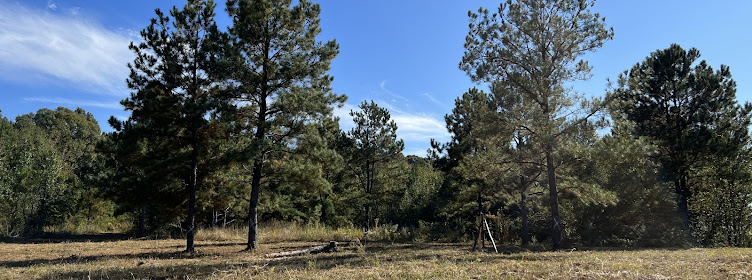As I usually do, I revisit topics I had previous spent much time thinking on and extrapolate further into the concept. In the .357 Magnum hunting concept, I have gone over a growing general interest in the cartridge and later comparing it to .30-30 as well. Then in 2023, I put the thoughts I had to the test and successfully harvested a doe which you can read about here. I would recommend reading the two linked articles as a baseline for the thoughts laid out below. The third article satisfies my desire to prove what I write about. It's not just enough to think it through, I want to execute that idea to see if it's viable. So far, the .357 Magnum topic has been my most successful venture to date. I intend to continue to see that through, however.
The most recent expansion on the idea is to verify ammunition choices for the hunting application. It started with questioning what I know about cast bullets, which is very little, and if the 358439 hollow point bullet would be sufficient for taking of whitetail deer. It very well may be but I'm not convinced that it will perform the way I think it will. If I understand correctly, I will need to adjust the bullet's lead alloy to match the velocity. Softer lead will need less velocity. My concern came about after considering the velocities for a cast bullet from GT Bullets. If I over drive the bullet, they could over expand and come part. The shank may continue to punch through but it might be the only thing that does. I would like to avoid that if I can. I want expansion and penetration of the whole expanded bullet and not just a small diameter part. For a demonstration what I mean, I recommend the 38 Special/357 Magnum cast bullet video series by Loads of Bacon on YouTube.
If my concerns are valid, I would likely see the cast 358439 LSWCHP basically explode on penetration with the deer if the alloy is too soft. While chunks of lead would spread outward in a cone shape, I don't consider this ideal even if it is mortally wounding. The next big issue I have is sorting out which alloy to use based on the use case of hunting out to 125 yards. I like the velocity of 1700 fps as a minimum for trajectory reasons but the velocity difference between 25 yards and 105 yards from a 16 inch barrel rifle is large. Tuning the bullet's alloy to match the 100 yard distance may cause the short range performance to suffer. As a result of these thoughts, I started to consider whether I should investigate the original bullet mold, the Lyman 358429.
By moving to the flat nose design, instead of the HP, I may be able to improve the perceived integrity issue. Once again, by tuning the alloy, I should still get expansion but keep integrity. I might not get as much expansion, however. Basically a JSP with out the jacket.
In the end, I won't know until I start experimenting with cast bullets beyond what I have been doing.
All that said, it led me down a rabbit hole of what ammunition does work for hunting. Previously, I had identified that the Remington HTP 158 grain semi-jacketed hollow point based load and the Hornady Custom 158 grain XTP based load should have been among the best for the application. During that investigation, I had discarded the jacketed soft point in general for hunting as I couldn't verify the lowest velocity needed for expansion. Simply put, a JSP fired from a typical revolver barrel is not moving fast enough to expand in any meaningful way. When fired from a rifle, the bullets may still expand but the question of at what distance does this still work remains. This has been found to be true by various individuals and a person with rudimentary internet searching skills can find the revolver JSP tests.
I started going back looking for data to see how the JSP's actually do from rifles. There are a few people of have done testing plus anecdotal data of people who actually hunt with them being successful.
After my research, I stand by my original choices of the hollow point bullets but I have softened on the JSP's from a rifle. I still haven't been able to validate minimum velocities for the choices on the market but I suspect that 75 yards for most of the inexpensive ones is probably fine. The Federal HammerDown load is figure is probably good for 100 yards assuming that Federal engineered them for 100 yards just as they do for the rest of their hunting ammo. The cheaper stuff might be good for 100 yards but I can't prove it just yet.
I've also found that the Barnes XPB 140 grain copper hollow point should work well down range. It might not survive up-close shots but should be fine outside 50 yards. It may also work well from a revolver.
In the end, there is definitely a wider world of useable bullets for hunting using the .357 Magnum caliber. While most of them I don't have a data set large enough to show solid proof of efficacy like I do with the HTP and XTP, what data is available hints that there is much more to learn about and test. I don't know if I will be able to start getting into ballistic gel testing anytime soon but I want to. I want to answer what bullets work at 100 yards from a .357 magnum rifle. I want at least 17 inches of penetration and around 1/2 inch of expansion that stays together.

No comments:
Post a Comment